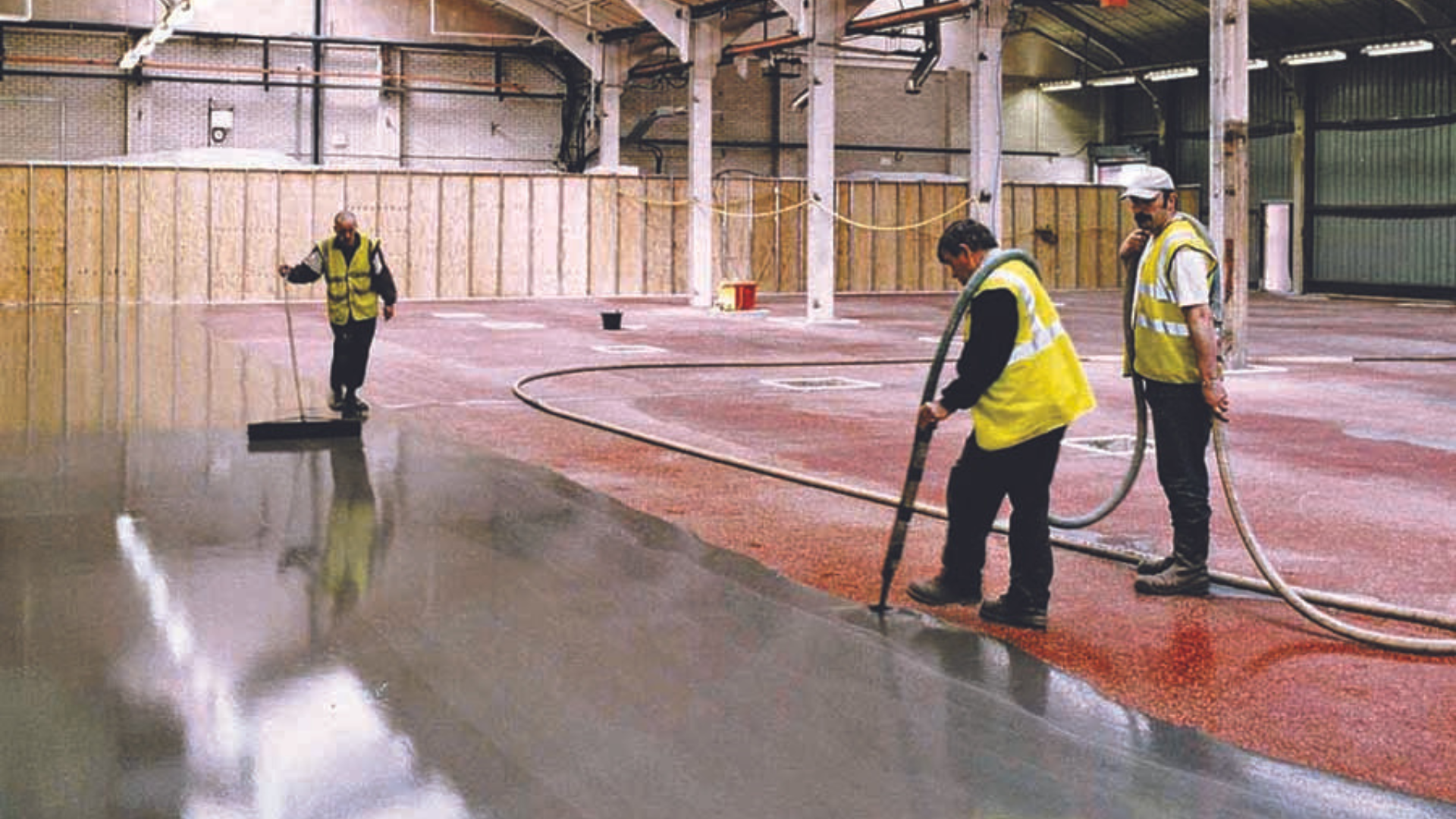For facilities managers overseeing warehouse, factory, and industrial buildings, the quality and longevity of the floor is paramount. Not only does the floor need to withstand significant wear and tear, but it also plays a crucial role in operational efficiency, safety, and overall aesthetics. One of the most effective ways to achieve a durable and level floor is through the application of the right floor screed. Let’s dive into the world of floor screeds tailored for the UK’s industrial sector.
What is a Floor Screed?
Screed is a thin top layer applied to the main part of a concrete floor to ensure it’s smooth and level. This layer can either be the final walking surface or more popularly, act as a substrate for other floor finishes.
Why the Right Screed Matters
The choice of screed plays a pivotal role in not only the longevity of the floor but also the overall functionality and safety of the workspace. Here are some comprehensive insights into the importance of selecting the right screed for industrial premises:
1. Safety First
- Reduced Trip Hazards: Uneven flooring can lead to significant trip risks. A well-applied screed ensures a smooth, even surface, minimising this danger.
- Machinery Stability: For industrial spaces using heavy machinery, a level floor is imperative. Any inconsistencies in the floor can affect the stability of equipment, leading to potential malfunctions or accidents.
- Chemical Resistance: Certain screeds are designed to resist chemical spills, essential for industries handling hazardous materials.
2. Operational Efficiency
- Ease of Movement: Smooth-screeded floors facilitate the easy movement of machinery and personnel. This is especially crucial for warehouses where forklifts and trolleys are in constant operation.
- Durability Under Pressure: Some industrial processes require heavy loads or create significant vibration. The right screed can endure such conditions without cracking or chipping, ensuring operations continue without interruption.
- Optimal Conditions for Specialised Operations: For areas requiring specific conditions – be it sterile environments, cold storage, or heat-intensive processes – screeds play a role in maintaining these conditions. For instance, screeds with good thermal conductivity can effectively work with underfloor heating systems.
3. Longevity and Maintenance
- Wear and Tear: The right screed acts as a shield, absorbing the daily wear and tear, thereby preserving the structural integrity of the floor beneath.
- Reduced Maintenance: Quality screeds, when applied correctly, reduce the frequency of maintenance checks and refurbishments. This results in lower long-term costs and reduced operational downtimes.
- Adaptability: Should there be a need to retrofit or upgrade systems like underfloor heating, certain screeds can be more accommodating without needing a complete overhaul.
4. Aesthetic and Professional Appeal
- Consistent Finish: Beyond functionality, a well-screeded floor offers a consistent, professional appearance. This reflects the company’s commitment to excellence and can make a positive impression on visitors, stakeholders, or potential clients.
- Flexibility for Future Upgrades: If there’s a future need to upgrade the floor finish or introduce decorative elements, a smooth and level screed provides the perfect base to work on.
Types of Floor Screeds
Traditional Sand and Cement Screed
- Composition: A mixture of cement, sharp sand, and water.
- Application: Typically mixed on-site and laid manually.
- Pros: Proven track record, widely available, and typically more affordable.
- Cons: Longer drying times and may require reinforcement to prevent cracking.
Liquid Screeds
Liquid screeds, also known as flowing screeds, have gained traction due to their self-levelling properties and other benefits:
- Composition: Calcium sulphate or cement-based mixtures that are more fluid than traditional screeds.
- Application: Pumped onto the floor, they spread out to give a smooth finish.
- Pros: Faster installation, better thermal conductivity (ideal for underfloor heating systems), and requires less labour.
- Cons: Can be more expensive and requires a more meticulous substrate preparation.
Fast-Drying Screeds
- Composition: Modified versions of traditional or liquid screeds with additives to accelerate drying.
- Application: Similar to their base type (traditional or liquid).
- Pros: Reduces downtime and allows for faster project completion.
- Cons: Can be more expensive due to the special additives.
Fibre Reinforced Screeds
- Composition: Traditional screed mixed with polypropylene fibres.
- Application: Laid manually or mechanically.
- Pros: Enhanced strength and reduced risk of cracking.
- Cons: Might be overkill for areas without heavy machinery or significant foot traffic.
Considerations for Selection
- Traffic Levels: Areas with heavy machinery or footfall may require a more robust screed type.
- Underfloor Heating: Liquid screeds, with their enhanced thermal conductivity, are preferable.
- Budget Constraints: Traditional screeds are often more budget-friendly, but the reduced labour and downtime with liquid screeds might offset their initial costs.
- Drying and Setting Time: Fast-drying screeds are essential if there’s limited time for project completion.
Conclusion
For facilities managers in the UK’s industrial sector, understanding the nuances of floor screeds is crucial. Whether you’re overseeing a sprawling warehouse or a bustling factory, the right screed can make a world of difference. Given the innovations in products, there are now more options than ever to ensure your floors stand the test of time, wear, and efficiency.


































